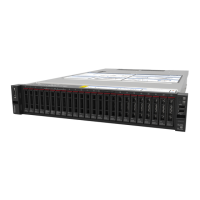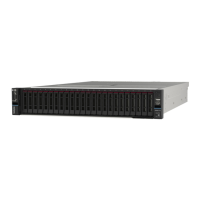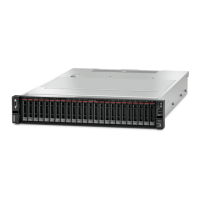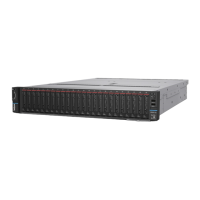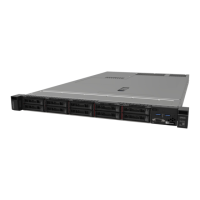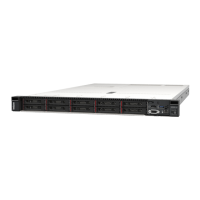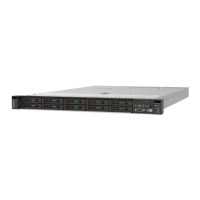Table 1. Server specifications (continued)
Specification
Description
• NVMe drives not installed
• PCIe flash adapter not installed
• GPU not installed
• Certain processors not installed:
– Processors with TDP more than or equal to 150 watts not installed
– For server models with sixteen 2.5-inch drives, twenty-four 2.5-inch drives, or
twelve 3.5-inch drives, the following frequency optimized processors not
installed: Intel Xeon 4112, 5122, 6126, 6128, 6132, 6134, 6134M, and 8156
processors
Firmware updates
Several options are available to update the firmware for the server.
You can use the tools listed here to update the most current firmware for your server and the devices that are
installed in the server.
Note: Lenovo typically releases firmware in bundles called UpdateXpress System Packs (UXSPs). To ensure
that all of the firmware updates are compatible, you should update all firmware at the same time. If you are
updating firmware for both the Lenovo XClarity Controller and UEFI, update the firmware for Lenovo XClarity
Controller first.
Best practices related to updating firmware is available at the following location:
http://lenovopress.com/LP0656
Important terminology
• In-band update. The installation or update is performed using a tool or application within an operating
system that is executing on the server’s core CPU.
• Out-of-band update. The installation or update is performed by the Lenovo XClarity Controller collecting
the update and then directing the update to the target subsystem or device. Out-of-band updates have no
dependency on an operating system executing on the core CPU. However, most out-of-band operations
do require the server to be in the S0 (Working) power state.
• On-Target update. The installation or update is initiated from an Operating System executing on the
server’s operating system.
• Off-Target update. The installation or update is initiated from a computing device interacting directly with
the server’s Lenovo XClarity Controller.
• UpdateXpress System Packs (UXSPs). UXSPs are bundled updates designed and tested to provide the
interdependent level of functionality, performance, and compatibility. UXSPs are server machine-type
specific and are built (with firmware and device driver updates) to support specific Windows Server, Red
Hat Enterprise Linux (RHEL) and SUSE Linux Enterprise Server (SLES) operating system distributions.
Machine-type-specific firmware-only UXSPs are also available.
See the following table to determine the best Lenovo tool to use for installing and setting up the firmware:
Chapter 1. Introduction 7
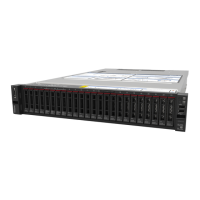
